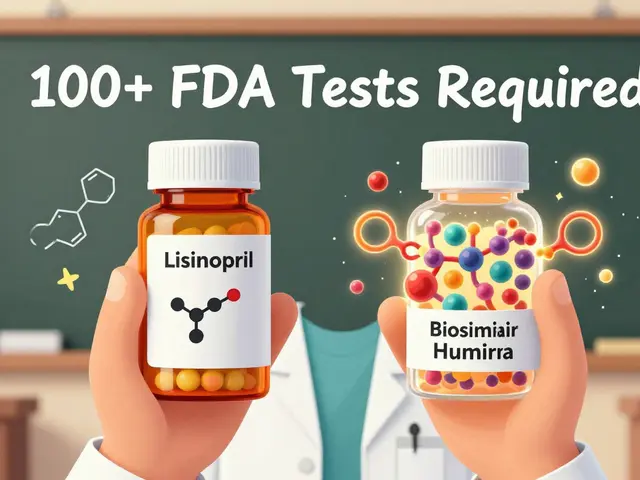Fenofibrate: Benefits, Uses, and How It Works
When dealing with Fenofibrate, a fibric acid derivative that primarily lowers triglyceride levels and raises HDL cholesterol. Also known as Tricor, it targets the body's fat metabolism and is often prescribed for high triglyceride disorders.
The drug works by activating PPARα, a nuclear receptor that regulates genes involved in fatty acid oxidation. This activation speeds up the breakdown of triglyceride‑rich particles, leading to lower blood triglycerides and a modest improvement in cholesterol, a waxy substance that can accumulate in arteries. In simple terms, fenofibrate tells the liver to burn more fat, which translates to clearer blood vessels.
How Fenofibrate Stacks Up Against Other Lipid Drugs
Most people first hear about statins, drugs that lower LDL‑cholesterol by inhibiting HMG‑CoA reductase. Statins excel at reducing "bad" cholesterol, but they don’t tackle high triglycerides as effectively as fenofibrate. When doctors need to hit both LDL‑cholesterol and triglycerides, they often combine a statin with fenofibrate. This combo can be especially useful for patients with hyperlipidemia, a condition marked by elevated blood lipids, including triglycerides and cholesterol that isn’t fully controlled by a statin alone.
Typical dosing starts at 145 mg once daily, taken with food to improve absorption. The drug reaches steady levels in about a week, and most patients see a 30‑50% drop in triglycerides within a month. For those with diabetic dyslipidemia, the reduction in triglycerides also helps improve insulin sensitivity, creating a virtuous cycle of better blood sugar control.
Like any medication, fenofibrate has side effects. The most common are mild gastrointestinal upset and a slight increase in liver enzymes. Rarely, users may develop muscle pain, especially if they’re also on a high‑dose statin. Because fenofibrate is cleared by the kidneys, dose adjustments are needed for people with moderate to severe renal impairment. Regular lab checks—lipid panel, liver function, and kidney markers—are key to staying safe.
Drug interactions matter, too. Fenofibrate can raise the levels of certain anticoagulants, so doctors often monitor INR more closely. It also interacts with some bile‑acid sequestrants, which can lower fenofibrate’s effectiveness if taken at the same time. A quick conversation with your pharmacist can prevent surprises.
For patients with metabolic syndrome, fenofibrate offers a dual benefit: it lowers triglycerides while modestly raising HDL (the "good" cholesterol). This shift improves the overall lipid profile and may reduce the risk of heart disease down the line. Studies have shown that when combined with lifestyle changes—diet, exercise, weight loss—fenofibrate’s impact on cardiovascular risk markers becomes even stronger.
Monitoring is straightforward: a baseline lipid panel before starting treatment, followed by repeat tests after 4‑6 weeks, then every 3‑6 months. If liver enzymes climb more than three times the upper limit, or if you notice unexplained muscle pain, contact your doctor right away. Most patients tolerate the medication well and appreciate the quick drop in post‑meal triglyceride spikes.
fenofibrate is a versatile tool in the fight against high triglycerides, especially when used alongside statins or lifestyle tweaks. Below you’ll find a curated selection of articles that dive deeper into comparisons, safety tips, dosage guides, and real‑world experiences. Whether you’re new to lipid‑lowering therapy or looking for advanced insights, the collection offers practical info to help you make informed choices.
Lopid (Gemfibrozil) vs. Common Alternatives: Pros, Cons, and How to Choose
A practical comparison of Lopid (Gemfibrozil) with the most used lipid‑lowering alternatives, covering mechanisms, benefits, risks and tips for choosing the right treatment.
Read More





